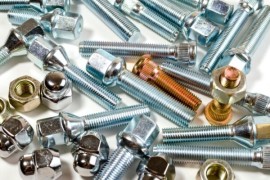{
"lazyNodes": false,
"abFitnotesFlag": false,
"abCrawlReviews": false,
"productOptionsCookie": false,
"orderDelayFlag": false,
"skipSessionCookie": false,
"covidMessage": false,
"fullTitleCookie": false,
"nrLoggerCookie": false,
"checkoutReviewCookie": false,
"productOptionSeqCookie": false,
"maintenanceFlag": false,
"bufferETACookie": false,
"multiShippingDiscountFlag": false,
"newFitmentFlag": false,
"surveyOptInFlag": false,
"crossSellFlag": false,
"skuMappingFlag": false,
"paySplitCookie": false,
"callDisableFlag": false,
"zipPaymentFlag": "u",
"hassleFreeReturn": false,
"lifetimeReplacement": false,
"cpn_off": false
}Need Help? Call Us1-866-529-0412
2007 Saturn Outlook
2007 Saturn Outlook Studs
Refine by:
Shop Catalog
Showing 1 - 1 of 1 results
Sort by:
Part Number: AC24238097
Guaranteed to Fit
$9.99
Vehicle Fitment
- 2007 Saturn Outlook All Submodels All Engines
Product Details
Warranty : 1-year or 12,000-mile AC Delco limited warrantyQuantity Sold : Sold individuallyProp 65 Warning :
![]() WARNING: This product can expose you to chemical which is known to the State of California to cause cancer and birth defects or other reproductive harm. For more information go to www.P65Warnings.ca.gov.
WARNING: This product can expose you to chemical which is known to the State of California to cause cancer and birth defects or other reproductive harm. For more information go to www.P65Warnings.ca.gov.
Page 1 of 1 | Showing 1 - 1 of 1 results
Popular Products

AC DelcoStud - Direct FitManufacturer #24238097
( Reviews) Questions, Answers
ACDELCO OE REPLACEMENT STUD
The factory-original fit and lasting function of ACDelco’s OE replacement Stud provides the perfect repair without breaking your budget. Established in 1899, ACDelco manufactures original GM parts and premium OE replacement...
Helpful Automotive Resources
A Quick Guide on the Types of Bolts, Studs, and NutsOne of the distinguishing parts of engine bolts is their head, the topmost part that acts as the surface gripped by the fastening tool. For example, hex head bolts have six-sided heads. Meanwhile, 12-point bolts have a dozen equally spaced points on their head in the form of a star.
Common Reasons Why Vehicle Fasteners FailIt bears mention that on most engines built since the ‘80s, it has become increasingly common for cylinder head bolts to be designed to stretch for maximum clamping force.– Richard McCuistian, ASE Certified Master Automobile Technician




